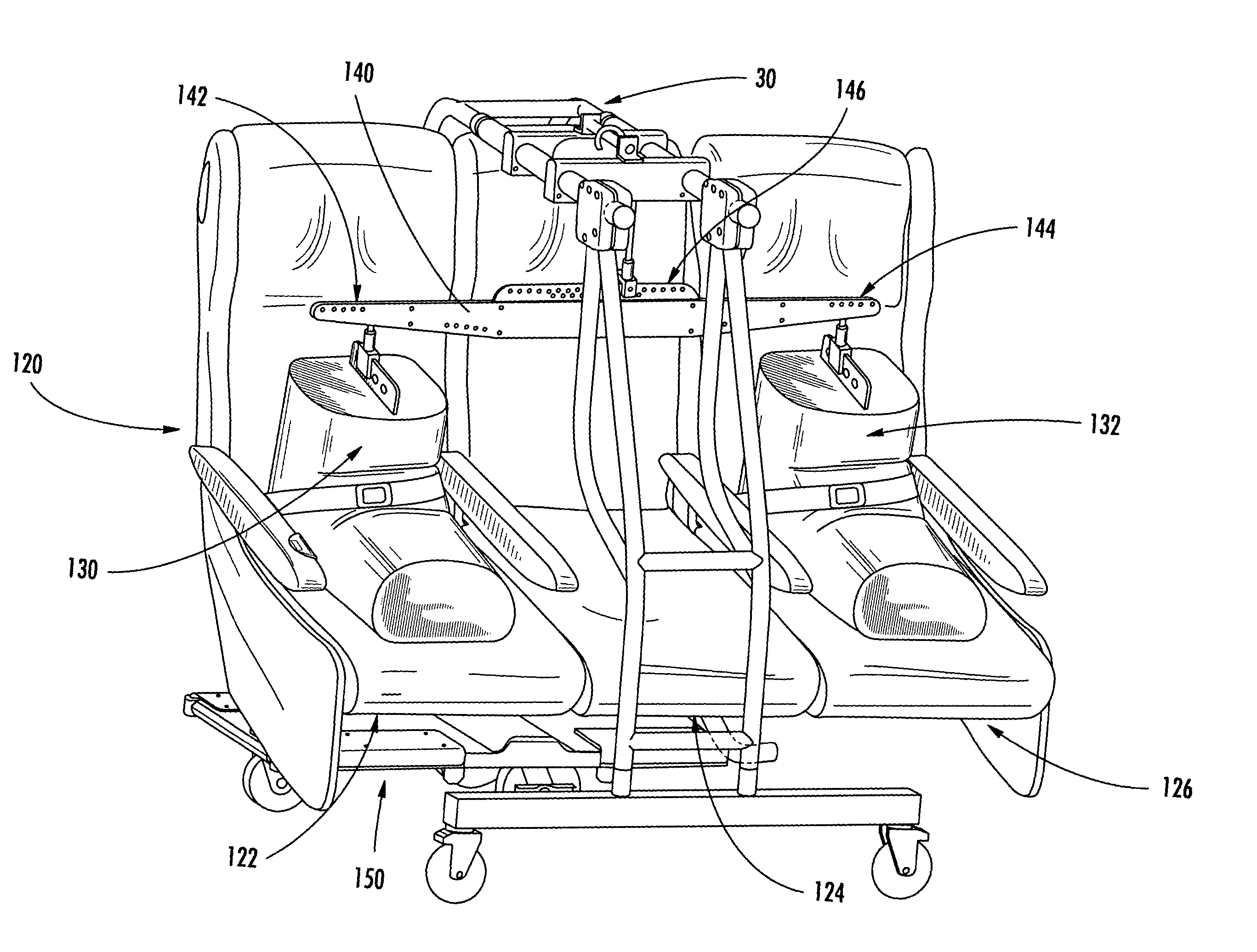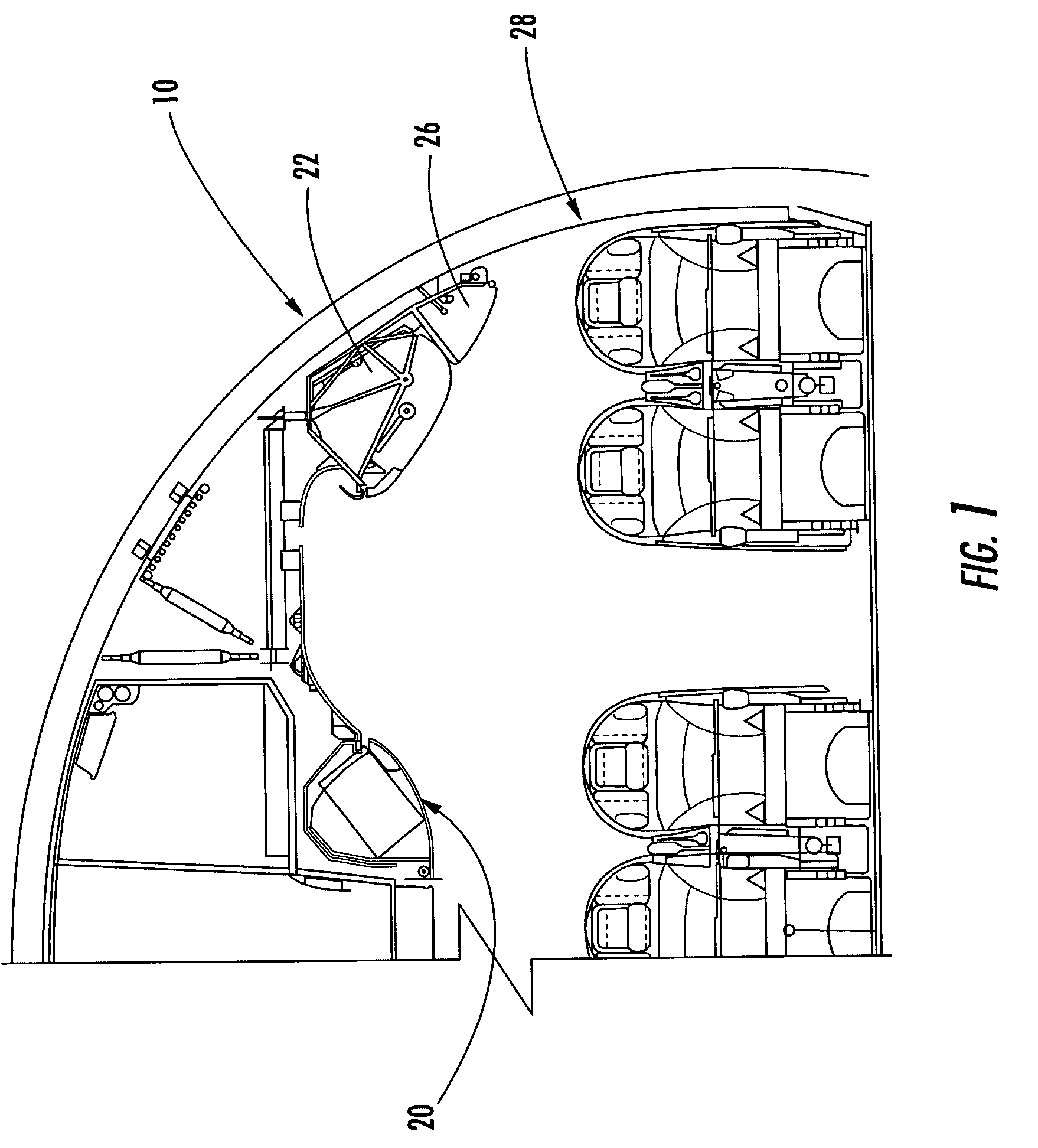Seat gantry
a seat gantry and passenger seat technology, applied in the field of passenger seat handling, can solve the problems of increasing increasing the complexity of passenger transportation seats, and increasing the difficulty of traditional methods of handling and installing seats, so as to reduce the physical requirements of seat handling operators, reduce the traditional crew of operators, and facilitate the handling
- Summary
- Abstract
- Description
- Claims
- Application Information
AI Technical Summary
Benefits of technology
Problems solved by technology
Method used
Image
Examples
first embodiment
[0057]FIG. 7 is a perspective view of an inside seat gantry 200 of the present invention. An inside seat gantry may be similar to an outside seat gantry, but may be designed for use in more confined spaces, particularly designed with a more compacted frame. Thus, after the seat assembly has been transported into the interior of the vehicle while onboard the seat cart, the seat assembly may be engaged by the inside seat gantry which removes the seat assembly from the seat cart and transports and positions the seat assembly to the proper location within the vehicle which may have only limited overhead space as shown in FIG. 1.
[0058]The frame of the inside seat assembly may be sized to accommodate the seat back height and seat width of different seat assemblies. An inside gantry frame may have two leg segments 202, 204 each with two or more tubes 206, 208, 210, 212 attached by tube cross-sections 214, 215, 216, 218, 219, 220. Typically, the tubes and cross-sections may be formed of alu...
second embodiment
[0065]FIG. 8 is a perspective view of an inside seat gantry 300 of the present invention. In this embodiment, the casters 305, 306, 307, 308 have been affixed to the inside seat gantry frame in such a manner as to increase the width 308 of the wheel base while maintaining the ability to easily navigate the inside seat gantry through narrow aisles and passageways. By increasing the width 308 of the wheel base, the inside seat gantry 300 has improved stability for more easily handling seat assemblies and moving the inside seat gantry 300 while a seat assembly is suspended from the hoist. The casters 305, 306, 307, 308 may be attached to base members 310, 312 that may be aluminum box sections. The base members 310, 312 may be rotatably connected to the bottom ends 314, 316 of the leg segments of an inside seat gantry frame. Alternatively, a base member may have an adjustable width such as caster mounts that retract inboard to decrease the wheel base for moving the inside seat gantry do...
third embodiment
[0068]FIG. 10 is a perspective view of an inside seat gantry 350 of the present invention with adjustable leg lengths and frame height and a hoist 360 mounted to a leg segment 352. To lower the center of gravity of the inside seat gantry 350, the weight of the hoist 360 has been shifted from a mounting location on the upper portion of the frame to a lower side mount. The hoist 360 has been modified to provide a more compact package to allow the hoist 360 to be mounted between the two legs 354, 356 rather than the elongated space 358 defined by the upper portion of the frame. This also increases the height the seat gantry can lift a seat assembly without increasing the overall height of the seat gantry. To provide such a compact hoist package, the hoist 360 has been modified from an in-line configuration to having a parallel gear drive configuration, for example where the motor 362 is mounted parallel to the strap drum 364 with a perpendicular gear drive 366 between the motor 362 and...
PUM
 Login to View More
Login to View More Abstract
Description
Claims
Application Information
 Login to View More
Login to View More - R&D
- Intellectual Property
- Life Sciences
- Materials
- Tech Scout
- Unparalleled Data Quality
- Higher Quality Content
- 60% Fewer Hallucinations
Browse by: Latest US Patents, China's latest patents, Technical Efficacy Thesaurus, Application Domain, Technology Topic, Popular Technical Reports.
© 2025 PatSnap. All rights reserved.Legal|Privacy policy|Modern Slavery Act Transparency Statement|Sitemap|About US| Contact US: help@patsnap.com



